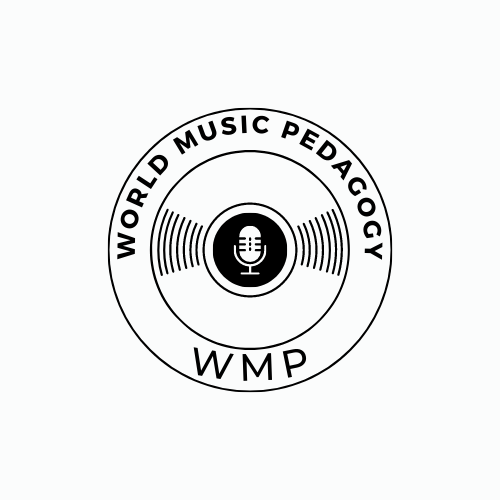Music of the Chicano Movement
Lesson Hub 5:
Themes and Leaders of the Chicano Movement
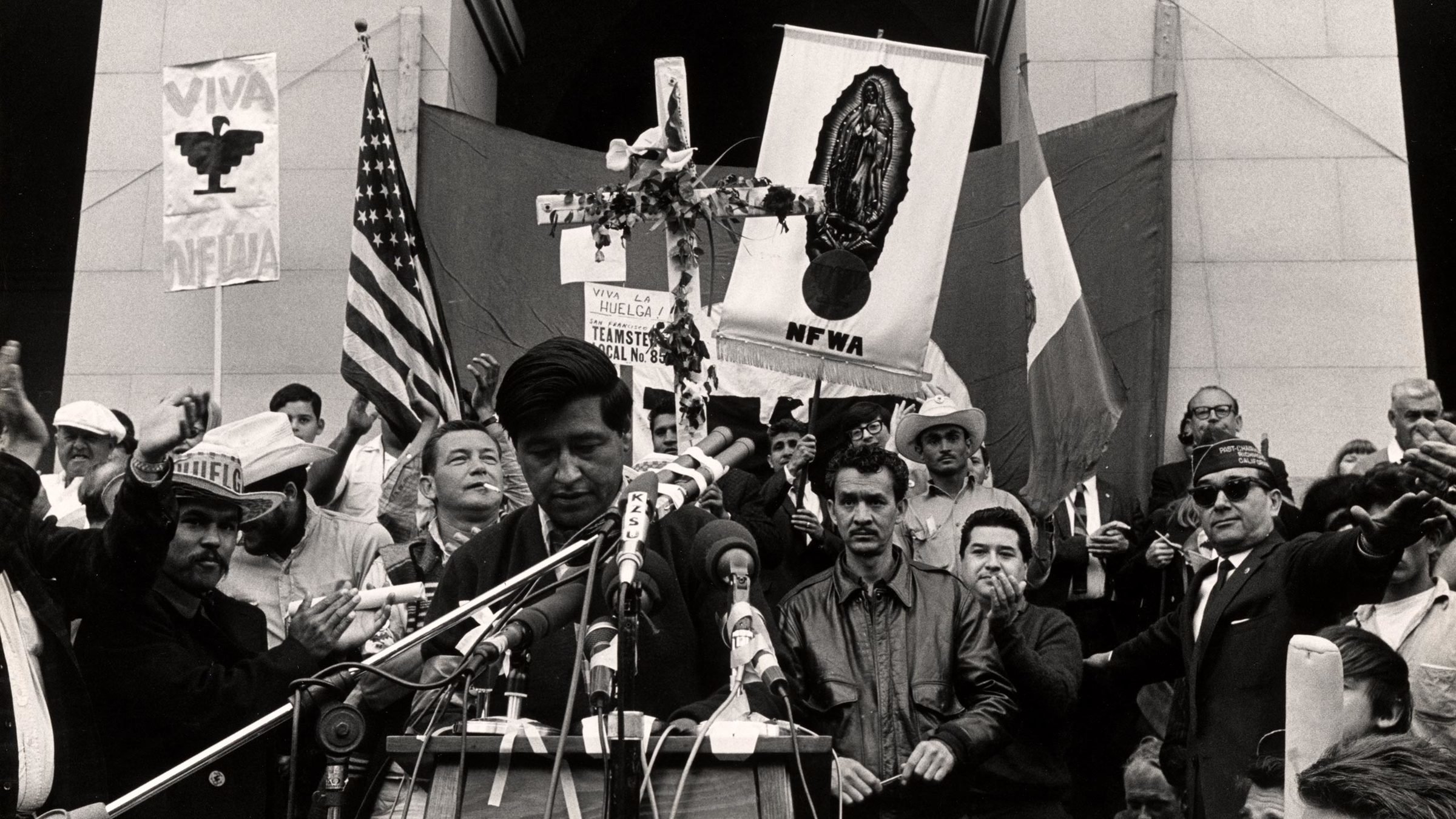

Who were some important Chicano movement leaders, what were they fighting for, and how did musicians help build solidarity and spread their messages?
José Angel Gutiérrez, Reies López Tijerina, and Rodolfo “Corky” Gonzalez at the National Convention of the Raza Unida Party, by Oscar R. Castillo. Smithsonian American Art Museum.
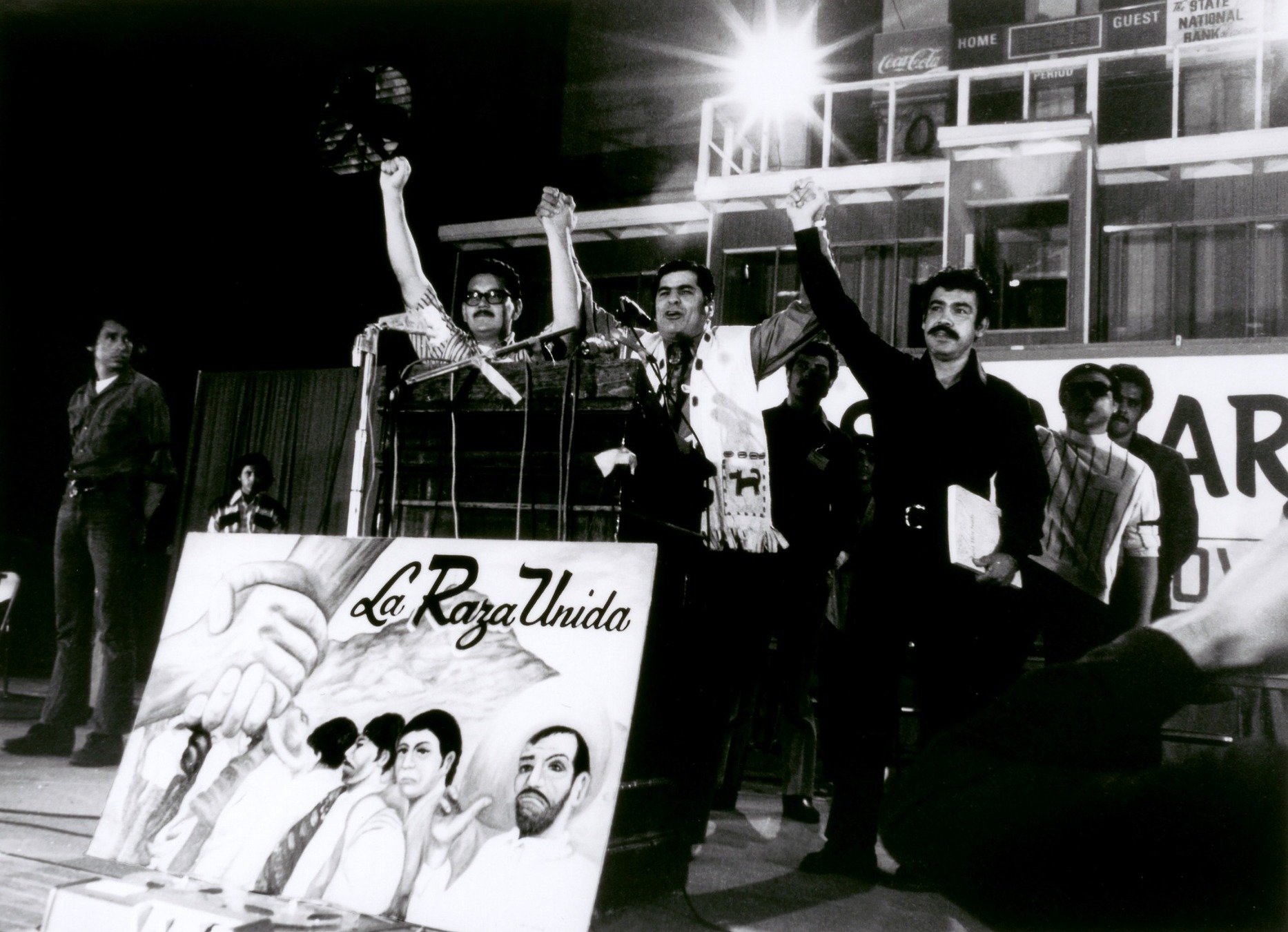
The overarching essential question for Lesson 5 is:

Themes and Leaders of the Chicano Movement


15+ MIN
20+ MIN
Goals of the Chicano Movement Through Music
Path 1

15+ minutes

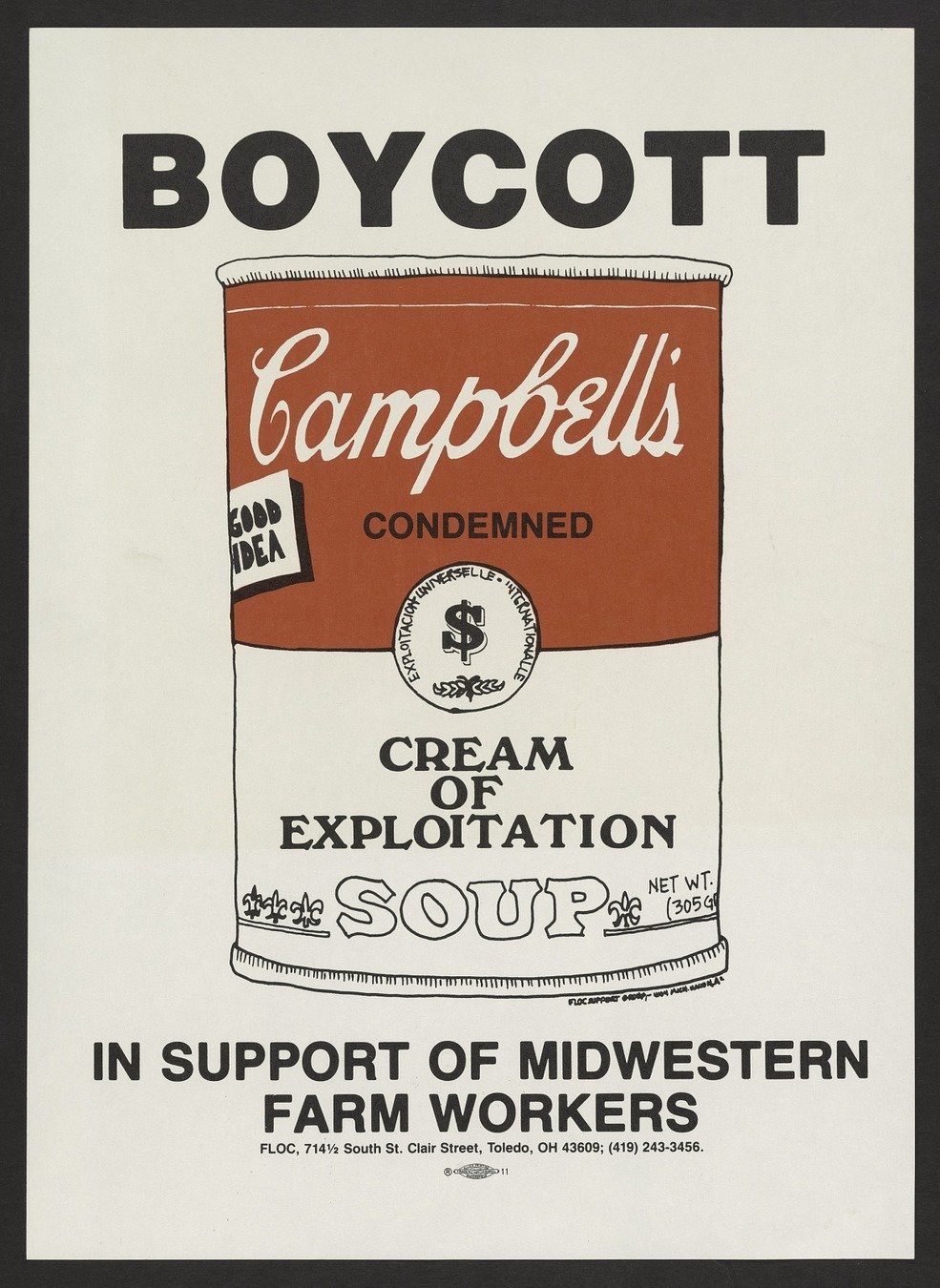
Boycott Campbell's Soup, unknown artist. National Museum of American History.
Like many other social movements, the Chicano movement was associated with a variety of goals—some that were ultimately attained, and some that were not.
Goals of the Chicano Movement



Join the Boycott - Don't Buy Gallo Wines, by the National Student Committee for Farm Workers. National Museum of American History.
Listening For Meaning: “Las condiciones”

What were some of the Chicana/o activists’ “demands” during the time of the Chicano movement?

Listen to this recording of “Las condiciones” (Our Demands) by Suni Paz while following along with the song lyrics.
As you listen, think about this guiding question:
"Las condiciones" Takeaways

- Treat ALL people with dignity and respect
-
Include Mexican-American history in the school curriculum
- Examples from song lyrics: Aztecs, Mayans, King Tiger (Reies Lopez Tijerina), land issues, the greatness of Mexico, labor strikes
- Do not marginalize the Spanish language in the school curriculum and respect it in a general, societal sense
- Hire more Mexican American teachers/professors
- End racism
- End oppression

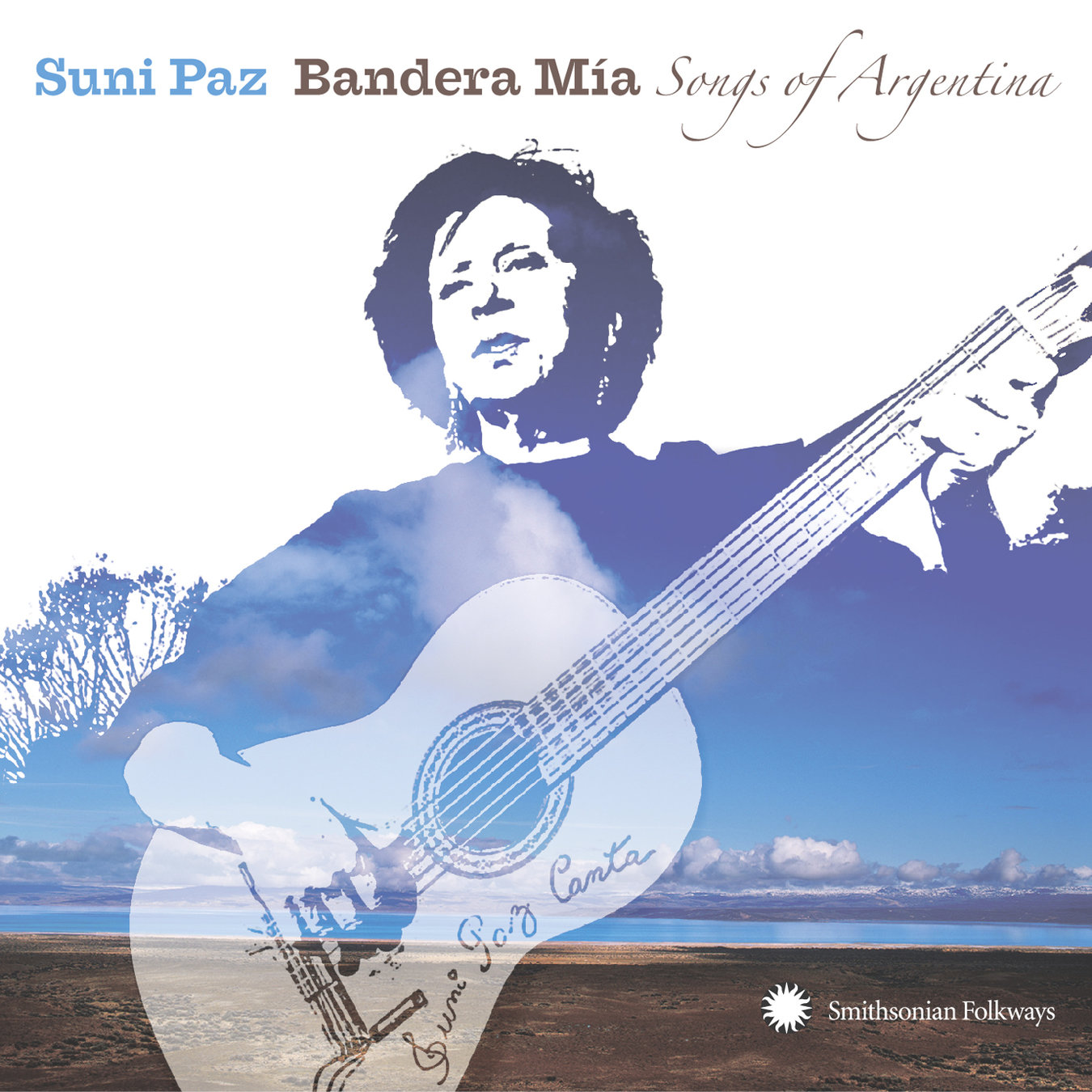
Bandera mía, cover art by Sonya Cohen Cramer. Smithsonian Folkways Recordings.
During the Chicano movement, leaders and activists made demands in response to injustices faced by Mexican Americans, related to:
- Discrimination: the unjust or prejudicial treatment of different categories of people
- Racism: prejudice, discrimination, or antagonism directed against someone of a different race based on the belief that one's own race is superior
- Oppression: unjust or cruel exercise of authority or power
- Marginalization: treatment of a person, group, or concept as insignificant or peripheral
- Exploitation: the action or fact of treating someone unfairly in order to benefit from their work
Understanding Terminology




Attentive Listening: "Las condiciones"
The song you just heard (“Las condiciones”) is also interesting from a purely musical perspective.
Listen to another short excerpt from this recording (30-45 seconds).
What do you notice about the “time” (meter) of this song?

Compound Meter

This song uses compound meter: The main beat is subdivided into groups of three (instead of groups of two).
Look at this notation example:


Can you clap the beat?
Can you pat the subdivisions?

Engaged Listening: Compound Meter
Listen to two more short clips from this recording.
- Clap or pat the steady beat along with the recording
- Clap or pat the subdivisions along with the recording


Engaged Listening: Strumming Pattern


When you find it, try to pat along.
Listen for the guitar strum played by Suni Paz as she performs "Las condiciones."
Perform With and Without the Recording

Consider facilitating the following rhythmic activities:
- Practice clapping the rhythm, beat, and triple subdivisions
- Put all three parts together (1/3 of class claps the beat; 1/3 of the class pats the rhythm; 1/3 of the class claps the subdivisions)
- Switch parts
- Transfer these patterns to instruments (e.g., play the rhythm on a conga drum, the beat on a cowbell, and the subdivisions on egg shakers)

Click to the next slide to view the notation for the main rhythmic motif in “Las condiciones.”
Engaged and Enactive Listening:



Engaged and Enactive Listening:
Perform With and Without the Recording

Learning Checkpoint
- What is the meter called when the main beat is divided into three equal parts?

- What social issues were activists/leaders responding to during the Chicano movement? What outcomes did they want?
End of Path 1! Where will you go next?






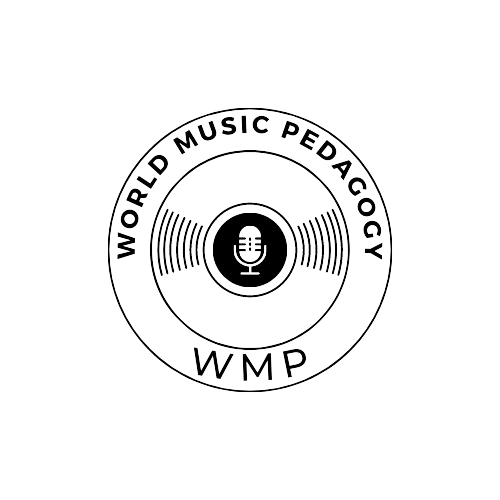


20+ Minutes
Path 2
The "Big Four": Leaders of the Chicano Movement

Flag of Aztlán, unknown artist. Wikimedia Commons, PD.
Leaders of the Chicano Movement


During the Chicano movement (roughly 1965–1975), various leaders emerged.
Pinback Button for the Chicago Alliance Against Racist and Political Repression, N.G. Slater Corporation. National Museum of African American History and Culture.
They gave the movement a collective voice, drawing attention to issues that people in Mexican Americans communities were facing during that time (related to discrimination, oppression, exploitation, and marginalization).
These leaders also united people within the Mexican American community and inspired them to fight against injustice and for equal rights.
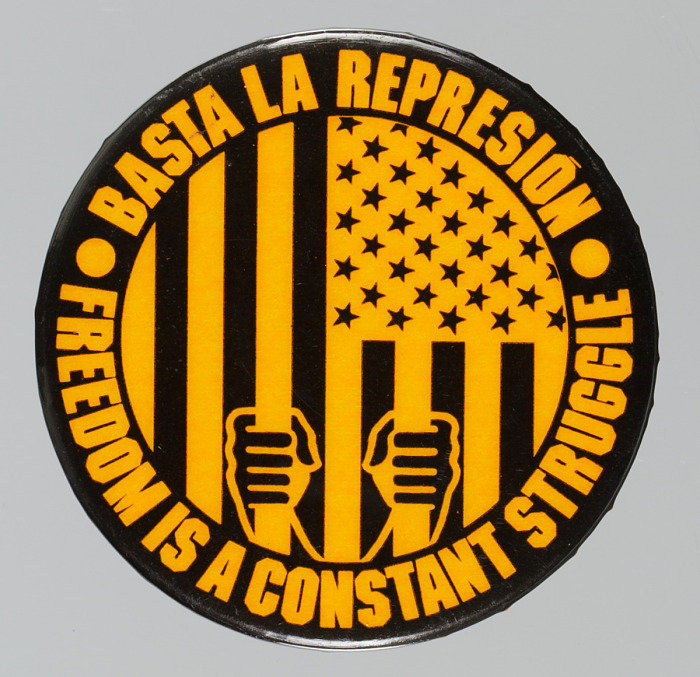
- Discrimination: the unjust or prejudicial treatment of different categories of people
- Racism: prejudice, discrimination, or antagonism directed against someone of a different race based on the belief that one's own race is superior
- Oppression: unjust or cruel exercise of authority or power
- Marginalization: treatment of a person, group, or concept as insignificant or peripheral
- Exploitation: the action or fact of treating someone unfairly in order to benefit from their work
Understanding Terminology




Although the Chicano movement had many leaders, four people became the most prominent faces of different regions and issues.
Getting to Know the “Big Four”
César Chávez
Reies López Tijerina

Corky Gonzales
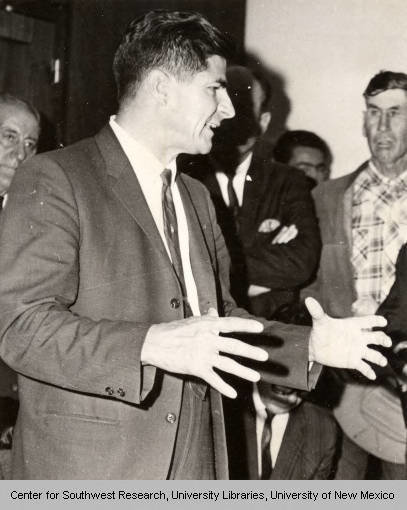

José Ángel Gutiérrez

Spotlight: César Chávez


César Chávez dedicated his life to improving working conditions and wages for farmworkers.
He organized numerous walkouts, marches, and strikes, which drew attention to these issues and, in some cases, resulted in positive changes (such as higher wages and safer working conditions).
Cesar E. Chavez. © 2003 USPS®. All rights reserved. Used with permission. Illustrated by Robert Rodriguez.

Spotlight: Reies López Tijerina


Reies López Tijerina “sought to reclaim the land grants" that many felt had been "stripped away following the Mexican-American War and the Treaty of Guadalupe Hidalgo in 1848” (Montoya, 2016, p. 67).
Tijerina was a controversial figure because unlike Chávez (who emphasized non-violent protest), his efforts to end oppression were aggressive and often turned violent.

Reies López Tijerina, by Karl Kernberger. Center for Southwest Research, University Libraries, University of New Mexico.
Spotlight: José Ángel Gutiérrez


José Ángel Gutiérrez, from Crystal City, Texas, was best known for using the ballot box to initiate change.
Gutiérrez held public office himself and co-founded La Raza Unida Party (People United), an independent political party that advocated for the rights of Mexican Americans and other minorities, and challenged the two-party system.


Jose Angel Gutierrez, unknown photographer. Denver Public Library Special Collections.
Spotlight: Rodolfo “Corky” Gonzales


Corky Gonzales is best known for articulating his ideas about “Chicano identity” in his epic poem, Yo Soy Joaquin/I am Joaquin.
Gonzales was an advocate for Chicano nationalism and self-determination:
- He thought the best way to liberate Mexican Americans from their history of colonization and oppression was to reject the dominant values of American society altogether.
- Gonzales believed that “Chicano communities needed complete autonomy in order to thrive” (Montoya, 2016, p. 93).

Corky Gonzales, unknown photographer. Denver Public Library Special Collections.

Musical Connections

During the time of the Chicano movement, many singer-songwriters composed songs about these leaders and their ideas about how to achieve social change.
Rumel Fuentes was one of these singer/songwriters.
According to Rumel, his songs described “the events of that time, people who were considered heroes of the Chicano movement, and experiences of everyday life for the Mexican American in the United States” (from Corridos of the Chicano Movement liner notes).
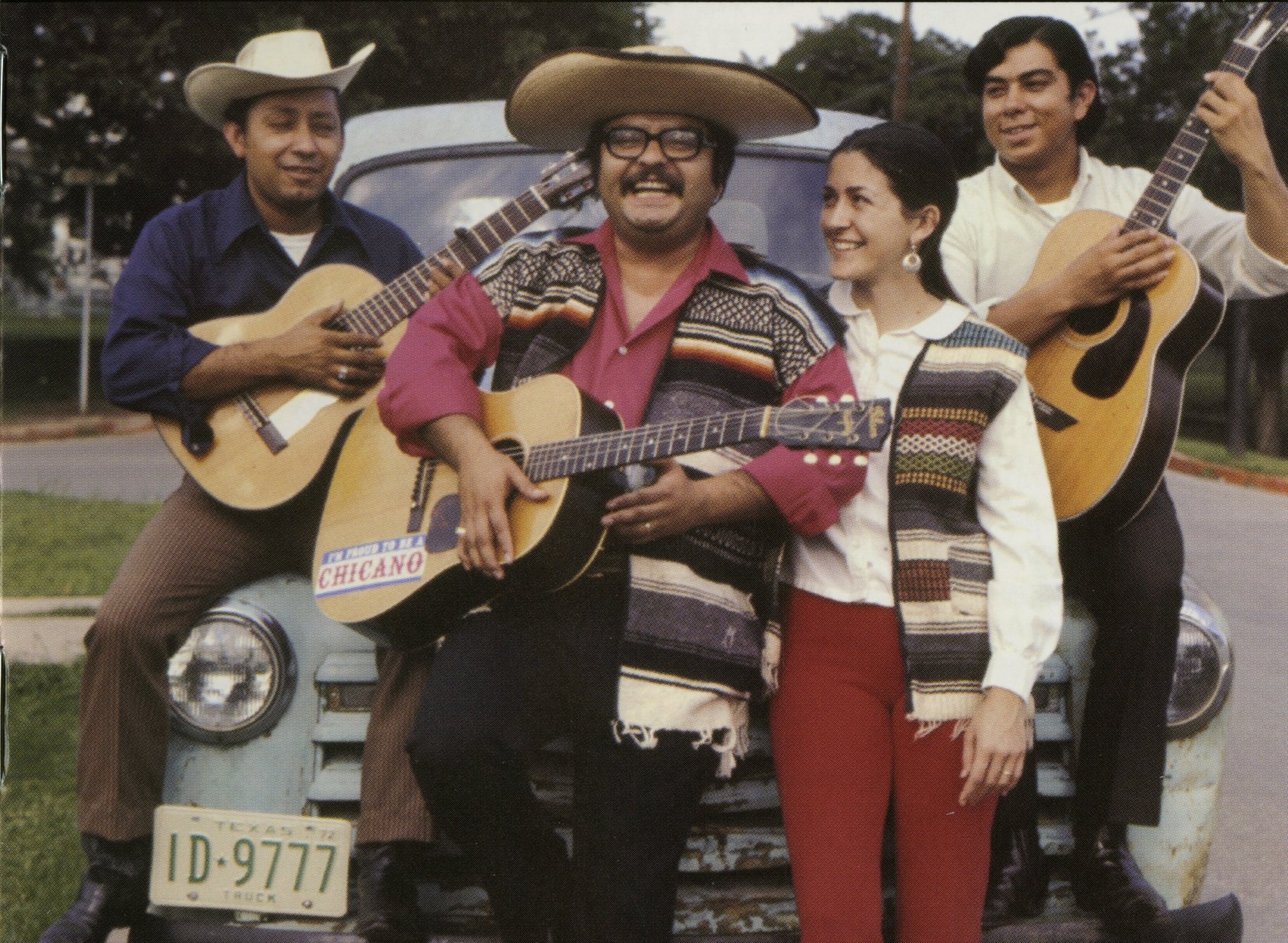
Rumel Fuentes, photo by Chris Strachwitz. Arhoolie Records.
Listening Activity


In the next activity, you will examine one of Rumel Fuentes’s songs, from both a musical and cultural/historical perspective.
- Choose one of the themes/leaders we have discussed.
- Listen to the Rumel Fuentes song that corresponds to your chosen theme/leader (audio files can be found on the next slide).
Listening Activity Instructions Continued


Underline any lyrics that provide examples of oppression, discrimination, exploitation, and/or marginalization.
Listen, while following along with the lyrics.
Listening Activity Instructions Continued


Next, complete the "Themes/Leaders of the Chicano Movement" worksheet:
1. "Corrido de César Chávez"
(Chávez, Labor)
2. "Aztlán"
(Tijerina, Land)
3. "Política en los barrios"
(Gutiérrez, Representation)
4. "Partido la Raza Unida"
(Gonzales, Representation)
Optional: Listen for Musical Characteristics


As you listen again, write down your answers to these guiding questions on your listening log:
1) What instruments do you hear?
2) What do you notice about the time/meter?
3) Is the melody simple or complex?
4) Are there any vocal harmony parts?
5) What is the structure of the song?
6) How do you think people learn this type of music (transmission)?
1. "Corrido de César Chávez"
(Chávez, Labor)
2. "Aztlán"
(Tijerina, Land)
3. "Política en los barrios"
(Gutiérrez, Representation)
4. Partida la Raza Unida
(Gonzales, Representation)

Extension Activity: Character Portrayals
The results of that research can be presented in a variety of ways:
- Write a skit where two of these important people meet.
- Write an interview with one of these important people.
-
Create a character map by drawing a “gingerbread man.”
- List the actions of an important person outside the figure and their qualities inside the figure.

Students can do further research on one of the important people or events mentioned in this lesson.
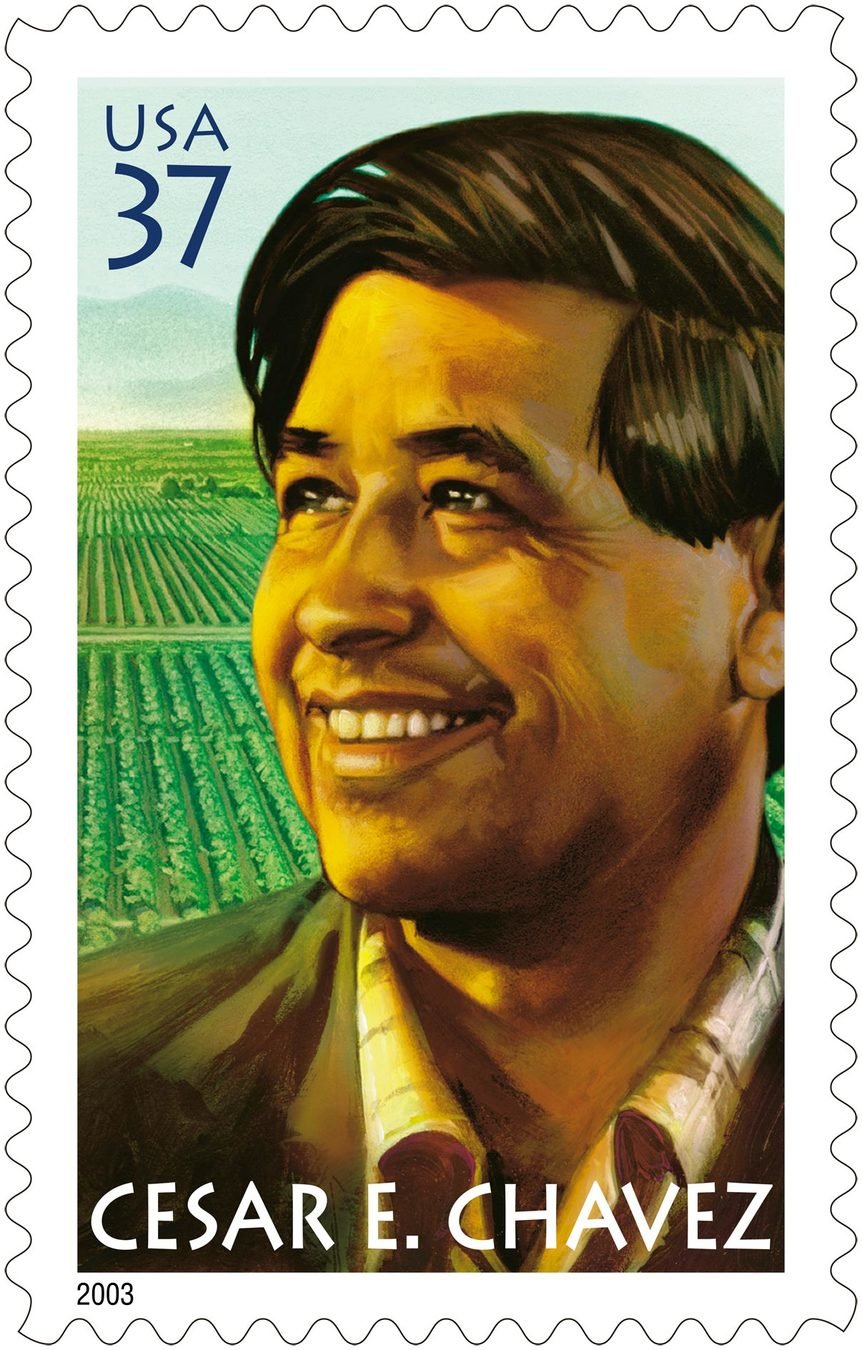




Learning Checkpoint

- How did musicians support these leaders and their causes?
- Who were four important leaders during the Chicano movement and which issues did they address?
End of Path 2! Where will you go next?








30+ Minutes
Path 3
"Soy del pueblo": Demonstrating Solidarity Through Music


Solidarity Day, printed by the Allied Printing Trades Council. National Museum of American History.
Music and the Chicano Movement

Music was an important part of the Chicano movement.
César Chávez Marches with the Musicians, by Jon Lewis. Farmworker Documentation Project, presented by the UC Santa Barbara Library..
Chicano movement leaders, such as César Chávez (pictured here), relied on music and musicians to spread their messages to a wider audience.

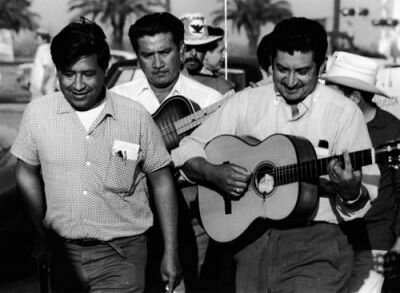

Attentive Listening: Instrumentation
Listen to a short excerpt from a song that became popular during the Chicano movement ("Soy del pueblo" by Flor del Pueblo).
What instruments do you hear?


Attentive Listening: Instrumentation
This recording features instruments that are popular in many Latin American genres, particularly genres from Puerto Rico and Cuba:
- Voice
- Guitars
- Bass
- Percussion (including güiros, bongos, claves, timbales, and conga)

From Left to Right: Güiro, LP Bongo Drums, Claves, Remo Conga Drums. National Museum of American History.


Attentive Listening: Instrumentation
In what order do the instruments appear?
Listen again:
After the opening riff, do you hear the percussion instruments noted on the previous slide?

Attentive Listening to Guaguanco

Listen to another short excerpt from “Soy del pueblo" (last 30 seconds).
What happens (musically) at the end of the song?

Engaged Listening: Guaguanco

Listen for and try to pat along with the first rhythm that enters during the guaguancó section.
Listen to the last 30 seconds of “Soy del pueblo" again.


During the Chicano movement (late 1960s/early 1970s), some songwriters and ensembles (e.g., the ensemble you just heard, Flor del Pueblo) were influenced by Latin American musical styles (such as the Cuban son), and wove these perspectives into their performance repertoire.
Integrating:Latin American Influences


Rolas de Aztlán: Songs of the Chicano Movement, cover art (featuring Flor del Pueblo) by Communication Visual. Smithsonian Folkways Recordings.
Integrating: Carlos Puebla

Carlos Puebla, photo by Barbara Dane. Paredon Records.

In particular, the members of Flor del Pueblo were inspired by the music of Carlos Puebla, an important Cuban singer-songwriter (1917–1989).


Attentive Listening: Voice
Starting at ~00:22, how many voices do you hear—in the first vocal phrase? The second? The third?”
Let's return to the beginning of the song . . .


Integrating: Lyrical Meaning
Can you catch any of these words: Yo canto (I sing), pueblo (community), soy (I am), voy (I go)?
Listen again . . .
What do you think they are singing about?

Integrating: Lyrical Meaning





What message do the singers convey in these lyrics?

“Soy del pueblo” Meaning


This song “is about a singer who identifies completely with his community and feels the obligation and joy to be their voice in song” (Azcona, 2008, p. 208).
(Estribillo)
Soy del pueblo, pueblo soy.
Y a donde me lleve el pueblo voy.
(Refrain)
I am of the people, I am the people.
Where the people take me, I go.


Integrating: Nueva Canción
“Soy del pueblo” is an example of nueva canción, a musical genre that became popular in many Latin American countries during the late 1950s and early 1960s.
The original version of the song was written by Carlos Puebla in the aftermath of the Cuban Revolution (1953–1959).
Carlos Puebla, Cuba: Songs for our America, cover designed by Ronald Clyne, artwork by Mimi Rosenberg. Paredon Records.
"Soy del Pueblo", featuring Carlos Puebla (recorded in 1975)



Integrating: The Embrace of "Soy del pueblo"
Why do you think a Cuban song (written by a Cuban songwriter) was embraced by the Chicana/o community in the United States during the late 1960s—ultimately becoming an anthem for the movement?


Engaged Listening: Steady Beat
Let's return to Flor del Pueblo's version of “Soy del pueblo.”
Clap the steady beat as you listen.


Engaged Listening: Rhythm
Clap this two-measure clave rhythm:



Engaged Listening: Slow Beat
As you listen again, step the slow beat from side to side.



Engaged Listening: Challenge Time!
Can you clap the syncopated clave rhythm while stepping side to side?




Enactive Listening: Perform “Soy del pueblo”
"Soy del pueblo" can be performed by students in secondary school ensembles.
- It can be played and sung with or without the recording.
- Challenge students to listen and try to match some of the rhythmic impulses or pitches that they hear.
- Then, offer them a chance to play from the musical notation (find on slide 52).


Enactive Listening: Perform “Soy del pueblo”
Click on the button to access a full musical transcription of “Soy del pueblo” – playable by middle and high school students.
The transcription includes:
- A full score
- Three-part vocal harmony with lyrics
- Individual instrumental parts written out for guitar (two parts), bass, voice, bongos, güiro, and claves


Learning Checkpoint
- What role(s) did musicians play during Chicano movement (and other social movements)?
- What are some of the important sonic features of Flor del Pueblo's interpretation of "Soy del pueblo"?
- How did listening to Flor del Pueblo's interpretation of "Soy del pueblo" affect your interpretation/performance of the song?
- What was the original context of the song "Soy del pueblo"?

End of Path 3 and Lesson Hub 5! Where will you go next?









Audio courtesy of:
Smithsonian Folkways Recordings
Videos courtesy of:
Smithsonian Education
Smithsonian Center for Folklife and Cultural Heritage
Images courtesy of:
The Arhoolie Foundation
Center for Southwest Research, University Libraries, University of New Mexico
TM/© 2021 the Cesar Chavez Foundation. www.chavezfoundation.org
Denver Public Library Special Collections
National Museum of African American History and Culture
National Museum of American History
National Portrait Gallery
National Postal Museum
Smithsonian American Art Museum
Smithsonian Folkways Recordings
Beinecke Rare Book & Manuscript Library, © Yale University
Lesson 5 Media Credits


Lesson Hub 5 Media Credits
© 2021 Smithsonian Institution. Personal, educational, and non-commercial uses allowed; commercial rights reserved. See Smithsonian terms of use for more information
This Lesson was funded in part by the Smithsonian Youth Access Grants Program with support from the Society for Ethnomusicology and the National Association for Music Education.
For full bibliography and media credits, see Lesson 5 landing page.
